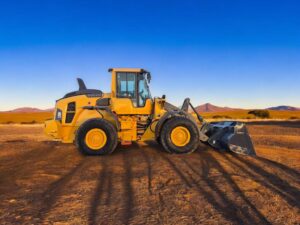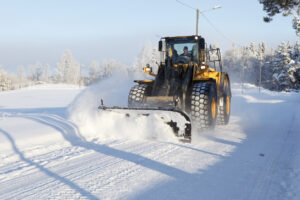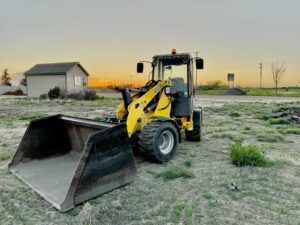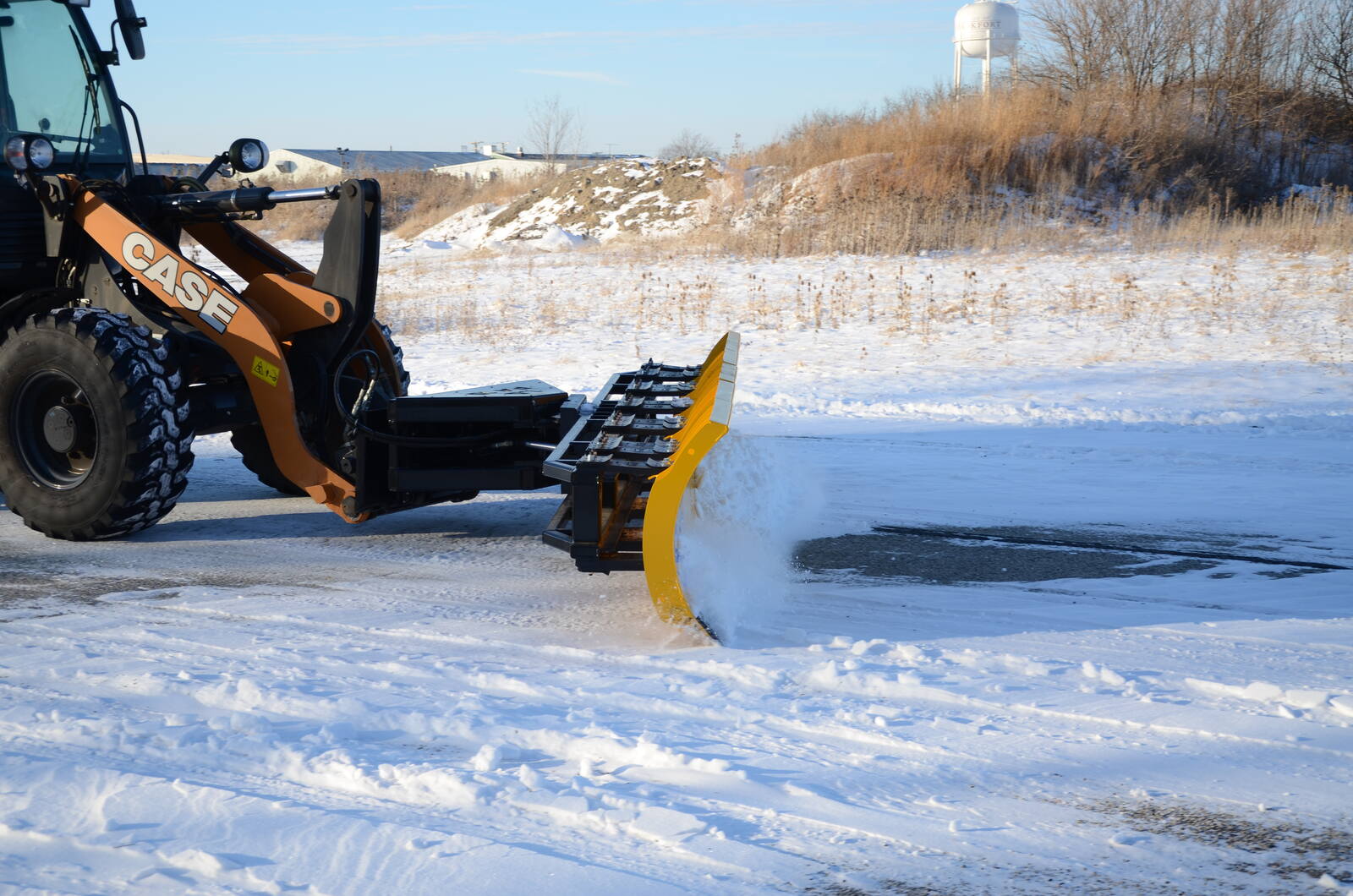When you’re dealing with brutal Western Canadian winters, not every snow pusher can keep up. The freeze-thaw cycles, compacted ice, and constant temperature swings expose every weak link in your equipment. What looks great in a brochure often fails in the field, and that’s where most contractors lose money.
On paper, a lot of snow attachments look similar. They all promise “heavy-duty performance” and “contractor-grade durability.” But when the first storm hits, the difference shows fast. Some pushers leave ice behind, others fold under pressure, and a few turn maintenance into a full-time job.
That’s why smart contractors look beyond marketing claims. They compare real-world performance, things like how well the blade contours to uneven lots, how easy parts are to replace, and how the plow holds up after years of abuse. Those are the things that matter when uptime decides whether your crew finishes the job or eats the cost of delays.
We’ll compare Arctic Snow & Ice Products against HLA, Metal Pless, Snow Wolf, and Kage, four of the biggest names in the snow removal game. You’ll see how each stacks up when it comes to durability, maintenance, and long-term cost of ownership, so you can make an informed call before winter hits.
Table of Contents
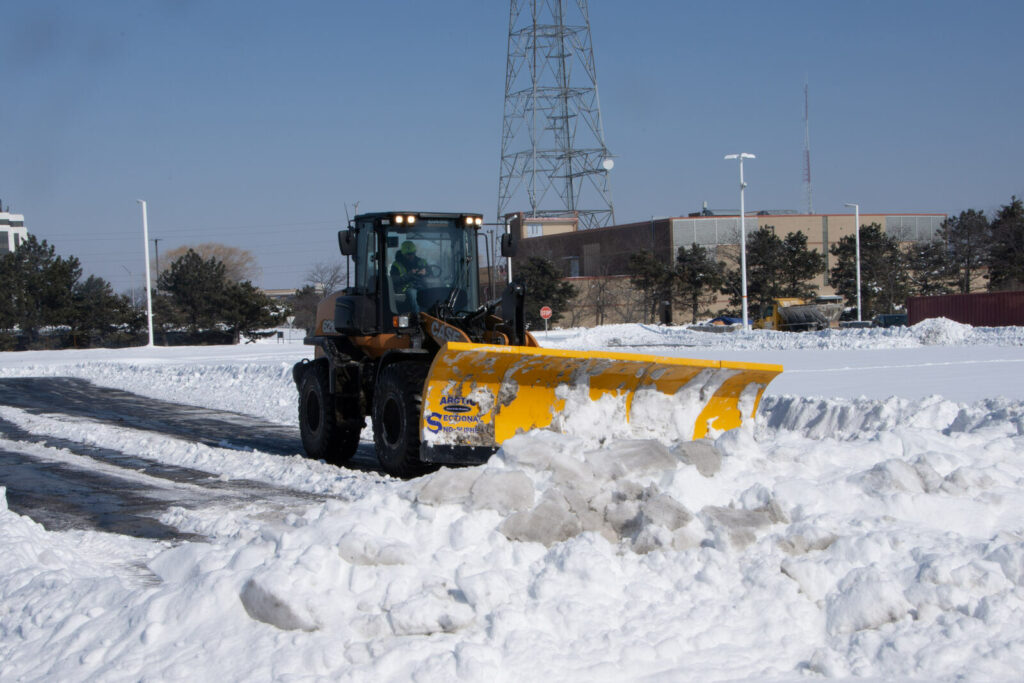
Arctic Snow & Ice: Contractor-Developed, Built for the Long Haul
Arctic Snow & Ice didn’t start in a boardroom. It started in the field, built by snow contractors who were tired of plows that bent, broke, or didn’t scrape as they should.
Instead of rigid one-piece moldboards that chatter across uneven pavement, Arctic introduced the Sectional Sno-Pusher™, a fully mechanical, sectional-edge design that follows the ground and clears right down to the pavement. Each section moves independently, tripping over obstacles and adjusting to dips or rises. That means fewer passes, less salt, and a cleaner finish, even on rough lots.
Every inch of these pushers is built to last. Parts wear out — that’s reality — but Arctic made sure every component is fully replaceable. You’ll never junk an entire pusher because of one damaged edge or bent side panel. Maintenance stays simple, repairs are fast, and downtime stays low.
Contractors across Western Canada still run Arctic pushers that are 15 – 25 years old. That kind of lifespan doesn’t happen by accident. It’s what you get when the people designing the equipment actually use it themselves.
Bottom line, Arctic Snow & Ice pushers are built by contractors, for contractors. They aren’t the cheapest upfront, but when you factor in lifespan, reliability, low depreciation and salt/sanding savings, they’re the most cost-effective option you’ll ever run.
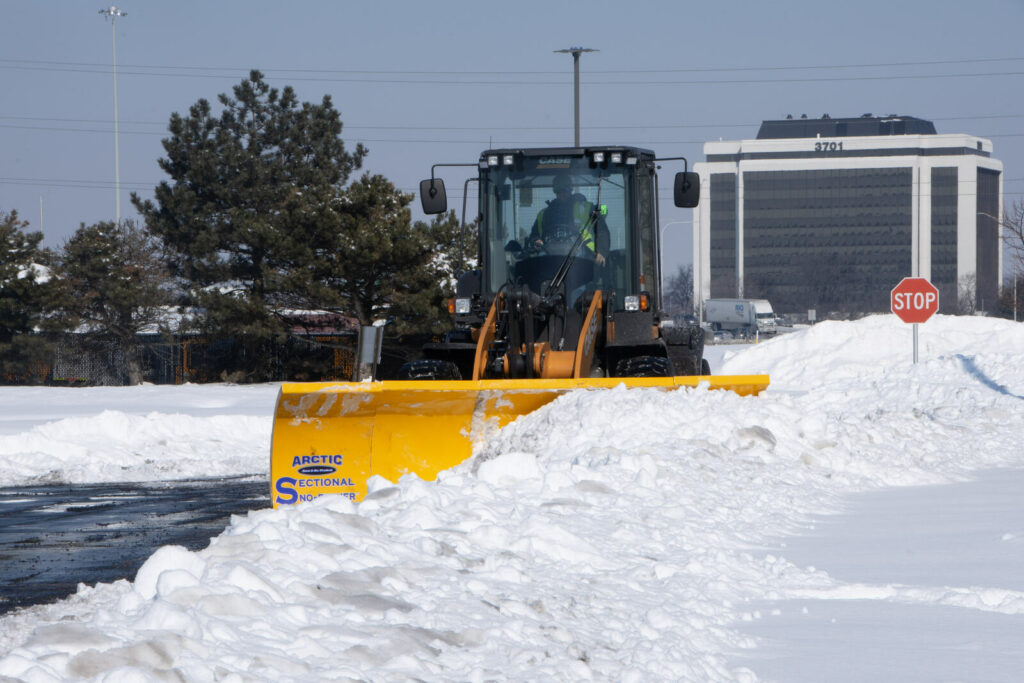
Arctic vs HLA: Which Offers Better Long-Term Value?
HLA is a solid entry point if you’re looking for an affordable, general-use pusher. They offer a wide range of attachments, and their upfront cost can look appealing when you’re managing tight budgets. But once you’ve run them side-by-side with Arctic, the difference shows fast.
HLA’s strength is price. Arctic’s strength is longevity.
Arctic’s sectional design clears closer to the pavement, follows uneven lots, and handles obstacles better than rigid-edge pushers. Each section trips individually — up to 9 inches over or under grade — which means cleaner passes, less salt use, and fewer operator headaches.
When it comes to maintenance, HLA units have more moving parts, different-sized hoses and specific fittings, which can make repairs frustrating and more expensive long-term. Arctic’s design is mechanical and modular, so every part can be replaced individually. No cutting, no custom fabrication, no downtime waiting on complicated parts.
If you’re running multiple properties or zero-tolerance sites, that difference adds up. Arctic pushers stay in the field longer, cost less to maintain, and hold their value year after year, while cheaper options often need major work halfway through their lifespan.
For contractors, municipalities, and industrial crews who depend on uptime, Arctic delivers the lowest total cost of ownership, even if it isn’t the lowest upfront price.
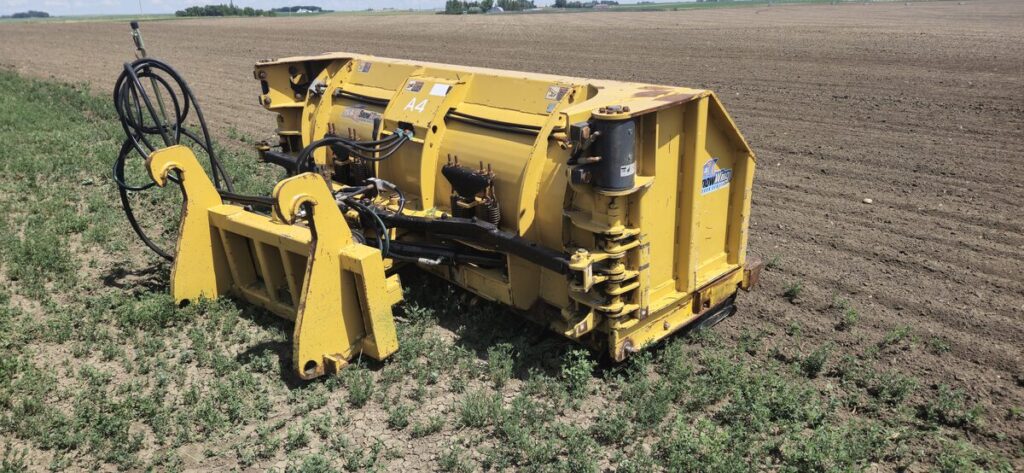
Arctic vs Metal Pless: What’s Better for Contractor Operations?
Metal Pless has built a reputation as a premium, high-end option in the snow removal world, and for good reason. Their live-edge technology gives a tight scrape on smooth lots, and they’ve earned respect from big operations. But that premium design comes with added complexity, higher maintenance costs, and more downtime risk when things go wrong.
Arctic takes a different approach. Their Sectional Sno-Pusher™ uses a simple, mechanical system that does the same job — scraping right to the pavement — without the web of hydraulics, grease points, and cylinder sizes that can complicate upkeep. Every Arctic part is built for field serviceability. If something bends or breaks, it can be swapped in minutes with standard tools Another key differentiator with the sectional is you have the ability to get aggressive to remove hardpack snow and ice due to it’s design, with live edge attachments when it comes in contact with hard snow or ice it’ll just glide over and leave behind move snow to get turned into ice.
Here’s the truth: Metal Pless is impressive, but it’s overbuilt for many contractors. It’s heavier, more expensive, and relies heavily on hydraulic components, and small springs that don’t love -30°C mornings. Arctic’s mechanical design is easier to maintain, performs consistently in extreme cold, and costs far less to keep running long-term.
If your goal is maximum uptime, fast maintenance, and predictable costs, Arctic wins. You’ll spend more time clearing snow, and less time in the shop chasing leaks or sourcing parts.
Arctic vs Snow Wolf: Which Handles Ice and Hardpack Better?
Snow Wolf built its name on clever, combo-style plow systems that convert between a box and an angle blade. It’s an innovative concept and can save time during setup, but in practice, the added mechanisms, hydraulic hoses, and one-piece mould boards aren’t the best design out there unless the features that Kage offers match your needs. More moving parts mean more to grease, adjust, and fix when something inevitably wears out mid-season. One-piece moldboards mean more snow left behind and wear parts get worn down quicker without a sectional design that contours the surface.
Arctic’s design keeps things simple. Every attachment is purpose-built for one job, move snow fast and clean without slowing operators down. The Sectional Sno-Pusher™ uses a drop-and-go setup that anyone can run confidently, whether it’s a new hire or a 20-year veteran. There’s no tricky sequence to learn, no alignment issues, and no guessing how it should handle on uneven lots.
That simplicity pays off big for municipalities and contractors running multiple machines or rotating operators. The Arctic design reduces training time, minimizes user error, and keeps equipment in service instead of sitting in the yard waiting for a specialist to fix it.
For crews who need reliable performance shift after shift, Arctic wins on usability, consistency, and long-term dependability. It’s not the flashiest design, it’s the one that works when it matters most.
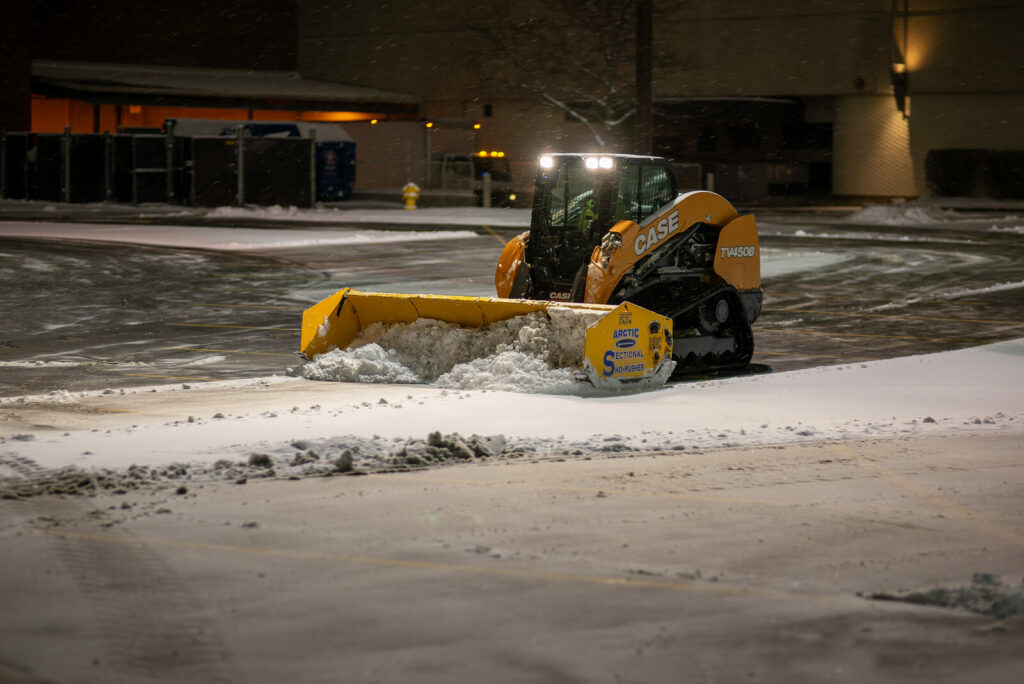
Arctic vs Kage: Which Is More Operator-Friendly?
Kage built its name on clever, combo-style plow systems that convert between a box and angle blade. It’s an innovative concept and can save time during setup, but in practice, the added mechanisms and hydraulic points make it a little too complex for many crews. More moving parts mean more to grease, adjust, and fix when something inevitably wears out mid-season.
Arctic’s design keeps things simple. Every attachment is purpose-built for one job, move snow fast and clean without slowing operators down. The Sectional Sno-Pusher™ uses a drop-and-go setup that anyone can run confidently, whether it’s a new hire or a 20-year veteran. There’s no tricky sequence to learn, no alignment issues, and no guessing how it should handle on uneven lots.
That simplicity pays off big for municipalities and contractors running multiple machines or rotating operators. The Arctic design reduces training time, minimizes user error, and keeps equipment in service instead of sitting in the yard waiting for a specialist to fix it.
For crews who need reliable performance shift after shift, Arctic wins on usability, consistency, and long-term dependability. It’s not the flashiest design, it’s the one that works when it matters most.
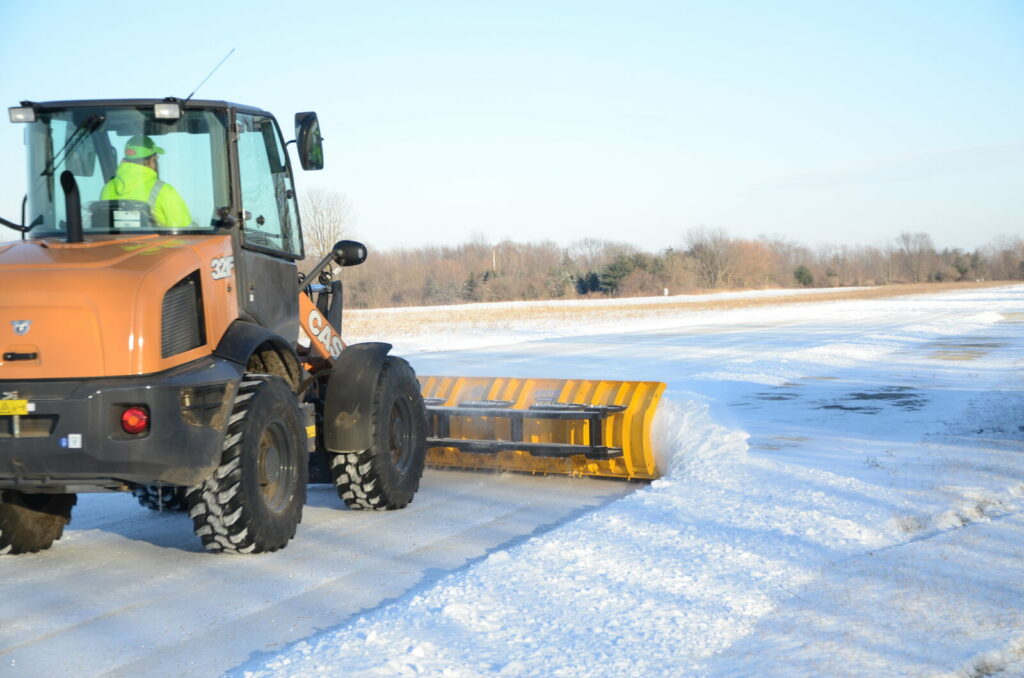
Live Edge vs Sectional Sno-Pusher: Which Performs Better in Canadian Conditions?
If you’ve been shopping for snow pushers lately, you’ve probably come across the debate between live-edge and sectional-edge designs. On paper, both claim to scrape closer and leave cleaner surfaces, but the difference becomes clear once the real Canadian winter hits.
Live-edge blades, such as those used on Metal Pless and Protech pushers, perform well on smooth, paved lots where snow is light and even before traffic compacts it into hard-packed snow. They flex to the contour of the ground and deliver a nice finish, but generally don’t offer the ability needed to apply down pressure to rip up the stubborn hardpack snow and ice .In the harsh freeze-thaw cycles across Alberta, Saskatchewan, and Manitoba, they’re less forgiving. When ice builds up or the surface is uneven, those flexible edges tend to ride up, leaving snow and hardpack behind.
Arctic’s Sectional Sno-Pusher™ was built specifically to handle that problem. Not only do the sections move independently, tripping over obstacles and following dips or rises up to nine inches, it also allows the ability to apply thousands of pounds of downforce when the need arises by simply tilting the attachment forward, letting it cut through hard-packed snow and ice on the first pass, without damaging the surface or the equipment.
The result? Cleaner lots, fewer re-passes, and up to 50% less salt usage. Contractors running Arctic report saving hours per storm and seeing lower wear on cutting edges because each section carries its own load and does not require any down pressure for most applications.
For Western Canada conditions — uneven lots, heavy snow, and sub-zero mornings — the sectional design is the proven winner for efficiency, longevity, and real-world scraping performance.
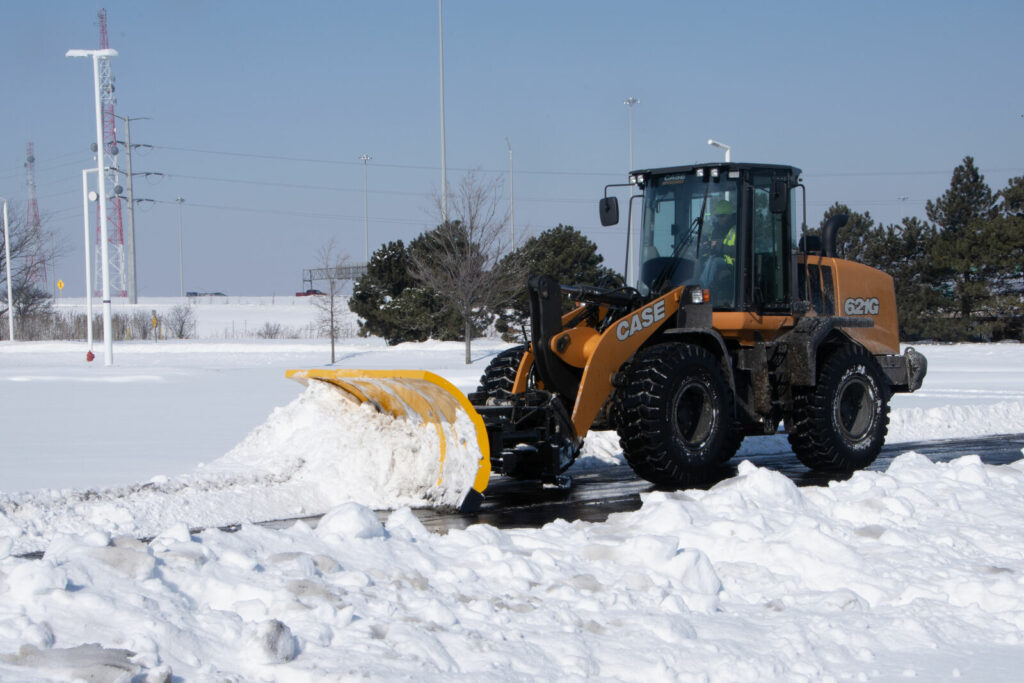
Total Cost of Ownership: Why Arctic Wins Over Time
Price tags don’t tell the whole story, especially in snow removal. What matters isn’t what you pay up front; it’s all the savings or costs that come after: Arctic customers are reporting lower maintenance and repair costs, time saved per acre of lot cleared, and less property damage, up to 50% salt/sanding savings per clearing, happier customers due to the clean scrape it offers, higher customer retention, simpler to train new operators on, and less depreciation as many of these attachments are reported to still be in service 25 years later.The savings aren’t up front; they are over the next 5+ years, where your attachments start paying you dividends in the benefits listed above.That’s where Arctic Snow & Ice stands out.
Most snow pushers need repairs or replacements after 5-10 years. Electrical features and wires ,hoses, cylinders and fittings break down and crack, and parts are hard to find when you need them most. Often, individual parts aren’t available, so you end up making major repairs for a minor issue. Arctic’s design eliminates that waste. Every piece — from the individual moldboards to the side panels and frame — is individually replaceable and easy to service in the yard. No special tools, no custom fabrication, no waiting weeks for proprietary parts.
When you add it up, the math is simple:
- Salt savings means you can save or you customer can save up to 50%.
- Fewer repairs mean less money spent on parts and downtime.
- Longer lifespan means you won’t be buying a new pusher every few winters.
Contractors who invest in Arctic equipment typically see a lower cost per hour of use compared to cheaper brands, even when the initial price is higher. Over time, that reliability pays for itself, not just in dollars, but in fewer headaches, fewer delays, and less stress during the peak season.
If you’re running multiple sites, crews, or municipalities, that kind of predictability isn’t a bonus, it’s a competitive edge.

Common Challenges in Snow Removal (and How Arctic Solves Them)
Every contractor knows that snow removal is about more than just horsepower; it’s about consistency. The real costs come from downtime, damaged gear and properties, and extra time spent doing passes when the plow doesn’t do the job right the first time. Arctic Snow & Ice products were designed to tackle those exact pain points head-on.
1. Hardpack and Ice Buildup
Traditional rigid blades tend to ride over compacted snow, leaving layers that freeze solid and create liability risks.
Arctic’s sectional design scrapes closer to the pavement and trips over obstacles, breaking up hardpack without gouging the surface, so you get a cleaner lot with fewer re-passes and excessive amounts of salting needed.
2. Operator Fatigue
Some plows require constant adjustment and attention. Arctic pushers are drop-and-go simple. Once you’ve adjusted your tilt to match the force needed to do a good job, the sectionals follow the grade automatically, and the operator can simply drop and go on each pass, reducing strain on both the operator and the machine.
3. Costly Downtime
When one solenoid, hose, fitting or cylinder fails on a conventional plow, you can lose an entire storm’s worth of work waiting on repairs.
With Arctic, every component is modular and replaceable, so you can swap out parts fast and get back in the field in hours, not days.
4. Maintenance Overload
Hydraulic-heavy systems and over engineered designs might look impressive, but they take time to maintain and fail more often in deep cold.
Arctic’s mechanical design is simple, proven, and field-repairable, the kind of system your crew can keep running with basic tools and a few spare parts on hand.
When you look at the long-term picture, Arctic gear reduces nearly every common snow-removal headache: fewer passes, less downtime, lower repair costs, and happier operators.
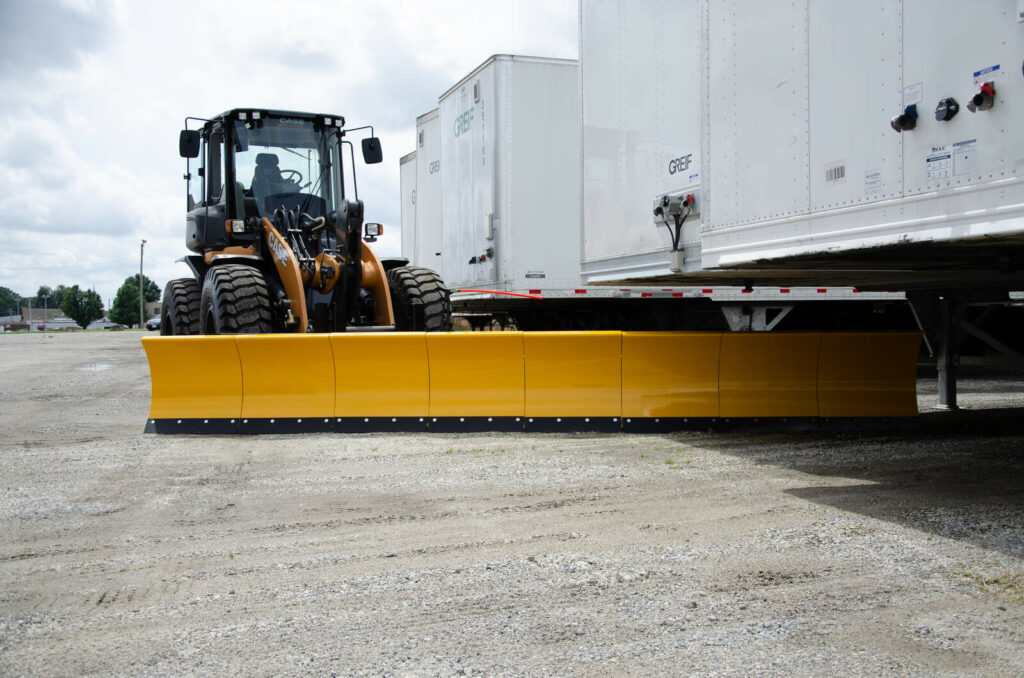
Why Contractors Across Western Canada Choose Arctic
When you’re working through back-to-back snow events in Alberta, Saskatchewan, or Manitoba, you can’t afford equipment that lets you down. Contractors across Western Canada choose Arctic Snow & Ice because it simply works, season after season, job after job.
Arctic’s reliability comes from its contractor-built design philosophy. Every component, from the sectional moldboard to the replaceable edges, was created to survive real-world abuse, not just look good on a spec sheet. The result is equipment that’s faster to run, easier to fix, and proven to last longer in extreme cold.
Pair that with Plains Equipment Rentals’ personal service, and you get the full package: reliable equipment, transparent pricing, and on-time delivery, backed by people who actually understand what it’s like to be on the job site at 4 a.m. clearing a hospital lot before sunrise.
For municipal crews, large contractors, and industrial operations across the Prairies, Arctic means uptime.
And with Plains, you’re not dealing with a call center, you’re talking directly to people who know the gear, the conditions, and the work.
If you’re looking for snow removal attachments that will last longer, scrape cleaner, and cost less to own, Arctic is the clear choice.
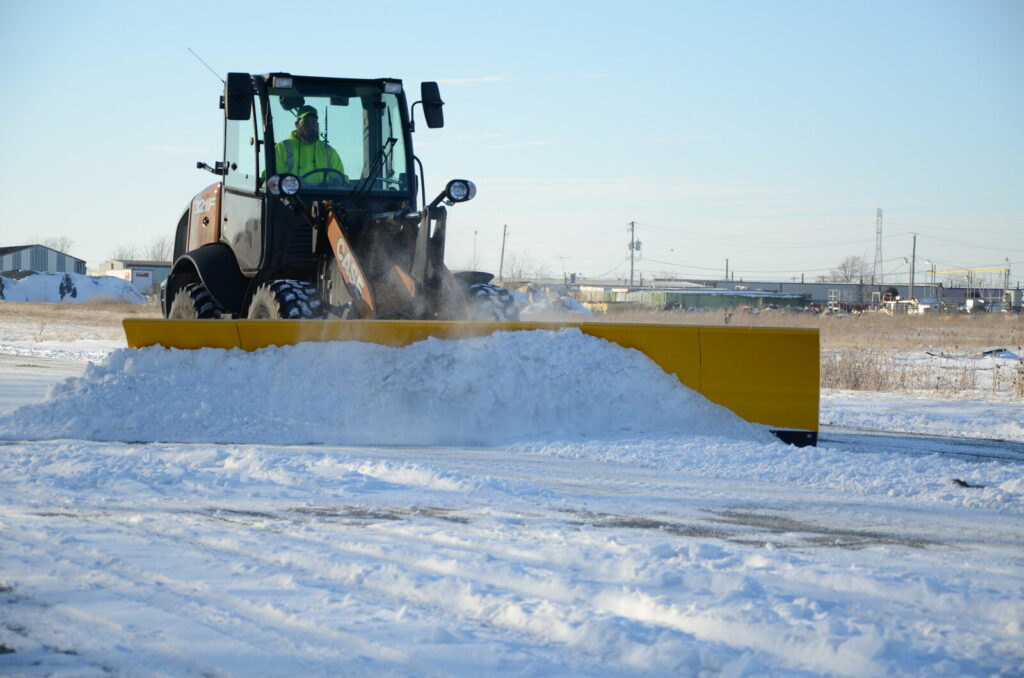
Ready to Put Arctic to Work This Winter?
If you’re done dealing with breakdowns, sloppy cleanup, and equipment that doesn’t last, it’s time to switch to Arctic Snow & Ice, built by contractors, proven in Western Canada, and backed by the team at Plains Equipment Rentals.
We stock and supply Arctic attachments across Alberta, Saskatchewan, and Manitoba, with transparent pricing and no hidden fees. You’ll get personal service, proactive maintenance, and gear that shows up ready to work, not sit in the shop.
Get in touch today to talk through what you need for the season ahead.


